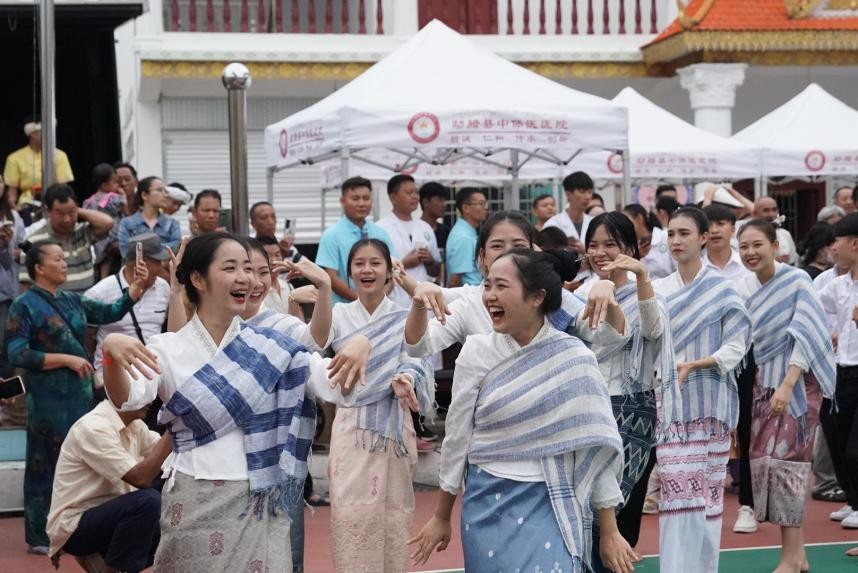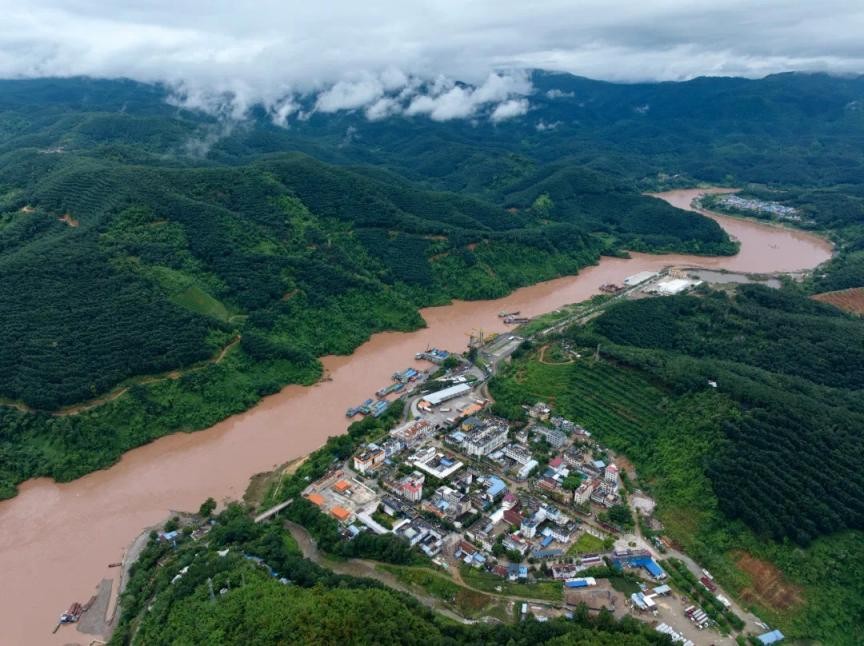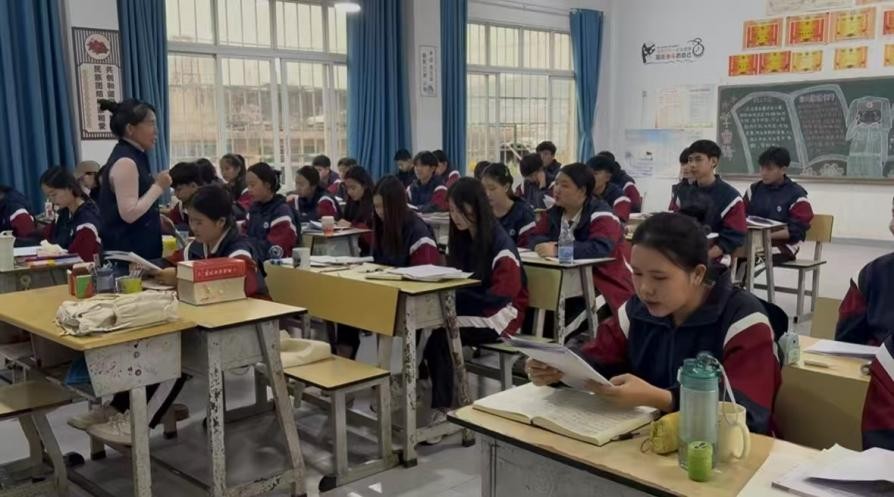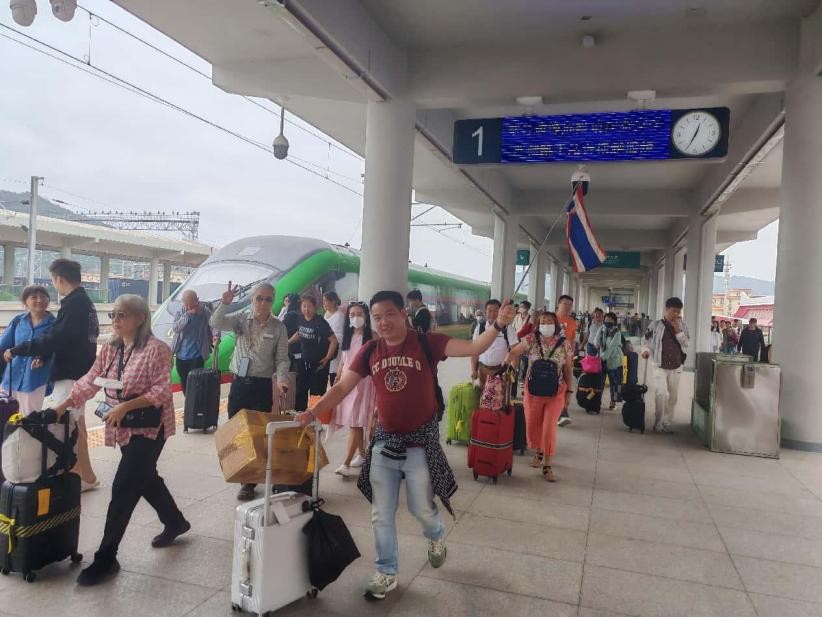




- BRNN
- BRI News
- BRNN News
- Database
Official Documents Polices and Regulations
Inter-government Documents International Cooperation BRI Countries
Business Guide Economic Data BRI Data
Trade
Investment Projects Latest projects
Cases - Content Pool
If you board a train from Mohan, Mengla county in southwest China's Yunnan province, 10 minutes later you'll be in Boten, the first stop in Laos on the China-Laos Railway.
This is a key node on the ancient Tea-Horse Road, a trade route dating back to the Tang Dynasty (618-907). During the Ming and Qing dynasties (1368-1911), Chinese mule caravans set out from Kunming, capital of Yunnan province, carrying Pu'er tea and ironware through the province's Pu'er and Xishuangbanna, and passed through Mohan before reaching Southeast Asia. In return, Lao traders brought rock salt and agricultural specialties into China via Boten.

Lao students from Mengla Vocational High School attend a market gathering at the China-Laos border. (Photo/Wang Zi)
Today, vendors' hawking at border markets and the multilingual announcements on the China-Laos Railway keep alive the pulse of cultural exchanges along this historic trade route, continuing the ever-evolving story of openness and connectivity.
Mengla is the southernmost county in Xishuangbanna, Yunnan province, sharing mountains and rivers with Laos and Myanmar. At daybreak, Yan Shu, head of Mengla's Manlie village, was already up and headed out the door, as the village was hosting a lively market gathering. Twice a month, Chinese and Lao residents gather in Manlie village for this festive event to visit friends and relatives, enjoy local food, and trade goods in a warm and joyous atmosphere.
Manlie village lies about five kilometers from Mengman Port on the China-Laos border, faces Muang Sing in Luang Namtha province, Laos. At the bustling market, aromas of grilled Dai cuisine mingled with the rich fragrance of Lao coffee, while handmade Lao crafts such as bamboo weaving and natural soaps filled the stalls. Yan weaved through the crowd, exchanging greetings with vendors along the way, staying busy until noon before sitting down to share a meal with his friends.

Photo shows an aerial view of Guanlei Port in Mengla county, southwest China's Yunnan province. (Photo/Zha Wei)
"China's roads just keep getting better!" one of Yan's Lao friends said, savoring a bite of pickled fish. Yan seized the moment to extend an invitation: "Next time, bring your wife and kids along - it's even better with family!"
Border trade between China and Laos has a long history. In 1993, the two governments officially opened the Mohan-Boten national port, further relaxing policies for cross-border commerce.
In June last year, Mengla and Muang Sing launched a "sister households" program, encouraging families from both sides of the border to support one another in times of hardship and come together for weddings and other celebrations, cultivating bonds like cross-border kinship.
For Yan, it's a relationship that has grown from business to brotherhood: "At first we were just trading partners, then drinking buddies - now we're neighbors watching each other's backs." These everyday interactions, he added, have slowly woven a durable fabric of friendship.
Tickets for the D87 international passenger train on the China-Laos Railway, running between Kunming and Vientiane, are in high demand. For 19-year-old Anong, a student from Laos, the railway is tied to her dream. Her sister began working for the railway over a year ago, and now Anong hopes to follow the same path. That's why she chose to study at Mengla Vocational High School.

Lao students study Chinese language at Mengla Vocational High School. (People's Daily/Qu Pei)
Over the past two decades, the school has enrolled nearly 3,000 Lao students. They typically spend the first two years learning Chinese before either applying to Chinese universities or pursuing careers as translators.
Many of Anong's classmates travel to school via the China-Laos Railway. To them, the railway is a "modern-day Tea-Horse Road" - still winding through mountains, still bearing goods and friendship. But unlike the past, when caravans traveled for three months, today's train journeys take just a few hours. The rhythmic clatter of horse hooves has given way to the roar of trains; loads once carried on horseback now move in containers.
Chanxay Xekang, another 19-year-old student from Laos, also studies at Mengla Vocational High School. He hopes to pursue a medical degree at a Chinese university after graduation. "China's medical technology is highly advanced," he said. "My goal is to return to Laos and open my own clinic."

Passengers aboard a China-Laos Railway train arrive in Mohan, Mengla county, southwest China's Yunnan province. (Photo/Huang Yuanfei)
Chanxay comes from northern Laos' Phongsaly province, where tea cultivation is a part of everyday life - with nearly every village growing it, and nearly every household consuming it. His grandfather often recalls the slow, grueling pace of mule caravans once used to carry tea out of the region. Today, a single rail line and a fiber-optic cable are enough to connect Phongsaly's tea with markets thousands of miles away.
From the jingle of mule bells to high-speed trains, and from ancient post stations to modern border ports, the mechanisms of connection have changed. Yet the bond forged by shared landscapes and sustained through vibrant cross-border exchanges remains unbroken.
Yan has already arranged the next gathering with Laotian friends via phone. Anong celebrates the water-splashing festival with classmates and teachers, and Chanxay returns home bearing freshly harvested spring tea. Across the borderlands, hope and friendship continue to flourish, stretching farther and wider than ever before.

Tel:86-10-65363107, 86-10-65368220, 86-10-65363106